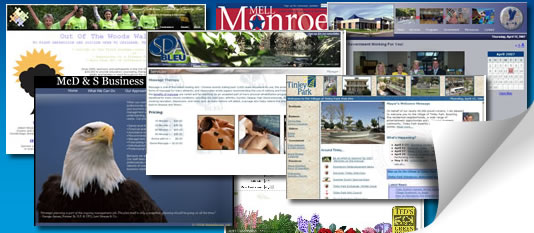WebWorks Intl' Frequently Asked Questions : Web Design
Color Scheme
-
Use colors that are easy on the eyes and represent your brand and product.
-
Don't use light text on light backgrounds or dark on dark.
-
Try to use not more than 4 main colors.
- Stay away from screaming colors, large fonts and ALL CAPS.
Content
-
Make sure your site has something valuable to offer.
-
Keep at least 60% white space on your site to improve readability.
-
Use images wherever possible (a picture says more than a thousand words), but keep your visually impaired visitors in mind: provide descriptions and ALT text for your images.
-
Break larger articles up in several pages, minimize vertical scrolling so that the most important info is visible without scrolling. If you can't break up the pages, provide a TOC or anchor list on the top.
-
Check for broken links. Nothing is more frustrating than a dead link. It tells your customer your site is stale and probably no longer relevant.
-
Keep your content fresh. It makes your visitors come back, again and again and creates loyalty.
-
Spell check your pages. It displays professionalism and instills trust in your company and products.
- If you have a newsletter, provide relevant information and make it easy for your visitors to unsubscribe.
Hyperlinks
-
Make sure your hyperlinks are recognizable as hyperlinks.
-
Link to sites that enhance your brand and product. Link to information that is relevant to your site; don't link to other sites just to have them link to you. You might get more visitors, but they will not stick around.
-
Make sure to open external sites in another window as to not lose your customer. The external site most likely has no link back to your site. This site is especially important when you have an eCommerce site and the link you are providing leads to additional information, case studies, testimonials, vendor site, etc..
-
Don't use the same style for non-hyperlinks as clickable links. For instance, if hyperlinks are bleu and underlined, don't underline regular text. Visitor will think this is a hyperlink and try to click on it. A good practice would be to change the appearance when mousing over a link.
-
Always have a link back to the homepage.
-
Make sure your visitors get to the content they are looking for in 2-3 clicks. Don't bury your content. If possible, provide a site map (list of all pages in tree view).
Images
-
Make sure to keep your images below 25kB. If an image has to be larger, use one of the following: interlaced GIF's, low resolution placeholder (while downloading the high resolution image), or break images up in smaller parts.
-
Don't overuse images and make sure your visitors do not have to scroll horizontally (keep max width boundaries in mind).
Layout & Design
-
Neat and easy navigation: Navigation of links on your site plays a big role in determining the stickiness of your site (how long your visitor stays and explores your site). Ask yourself this, What do visitors do as soon as they open your site? Make information easy to find. Use a site-map and search box.
-
Clean design: A clean layout that uses a lot of white space enhances a site's looks. Try to keep the focus on your content. Use fonts that will be available on all computers.
-
Optimize page load by minimizing the amount of graphics, video content and animations. If you use animations, make sure it uses streaming technology.
-
Optimize HTML & script code by preventing or removing unwanted tags and scripts. Use CSS to create reusable classes and styles. Do not use FrontPage and MS Word to create HTML content, or if necessary, remove the inefficient tags and styles by pasting in in (through) Notepad.
-
Design for all Screen Resolutions. Make sure you know the most commonly used screen resolution. If possible use a resizable layout and test your site for different screen resolutions. A site that is easy-to-use always encourages visitors to stay and read your content.
- Make sure your site is coded according to the HTML standard (World Wide Web Consortium ) and is Cross Browser Compatible. Internet Explorer, Mozilla Firefox, and Safari (Macintosh) are the most commonly used browsers. Google Chrome is a new player in the market with rapid growing fan base.

